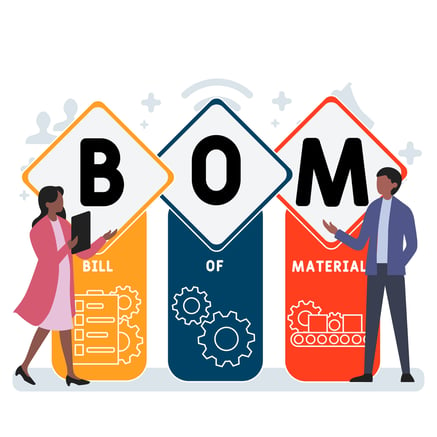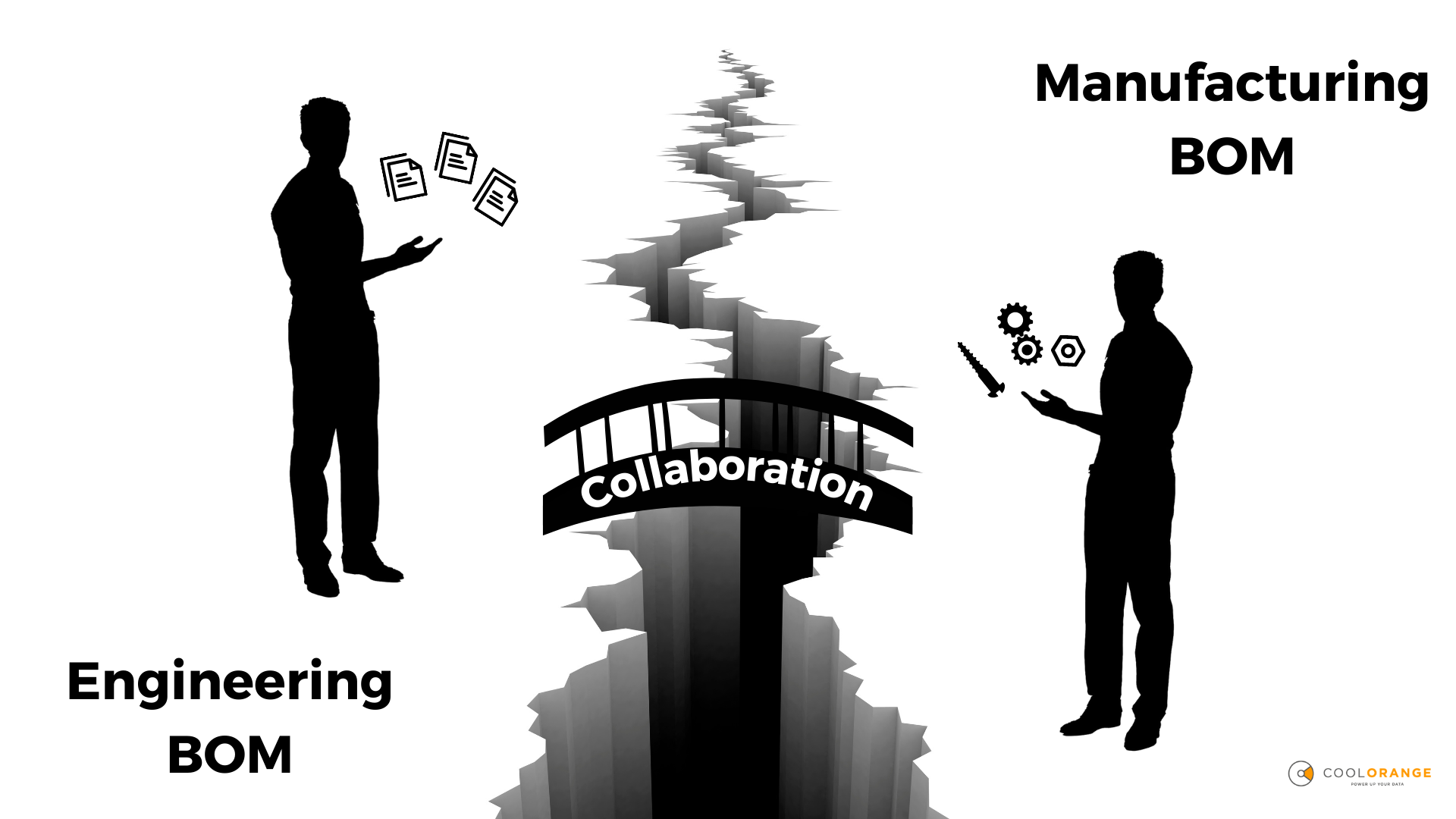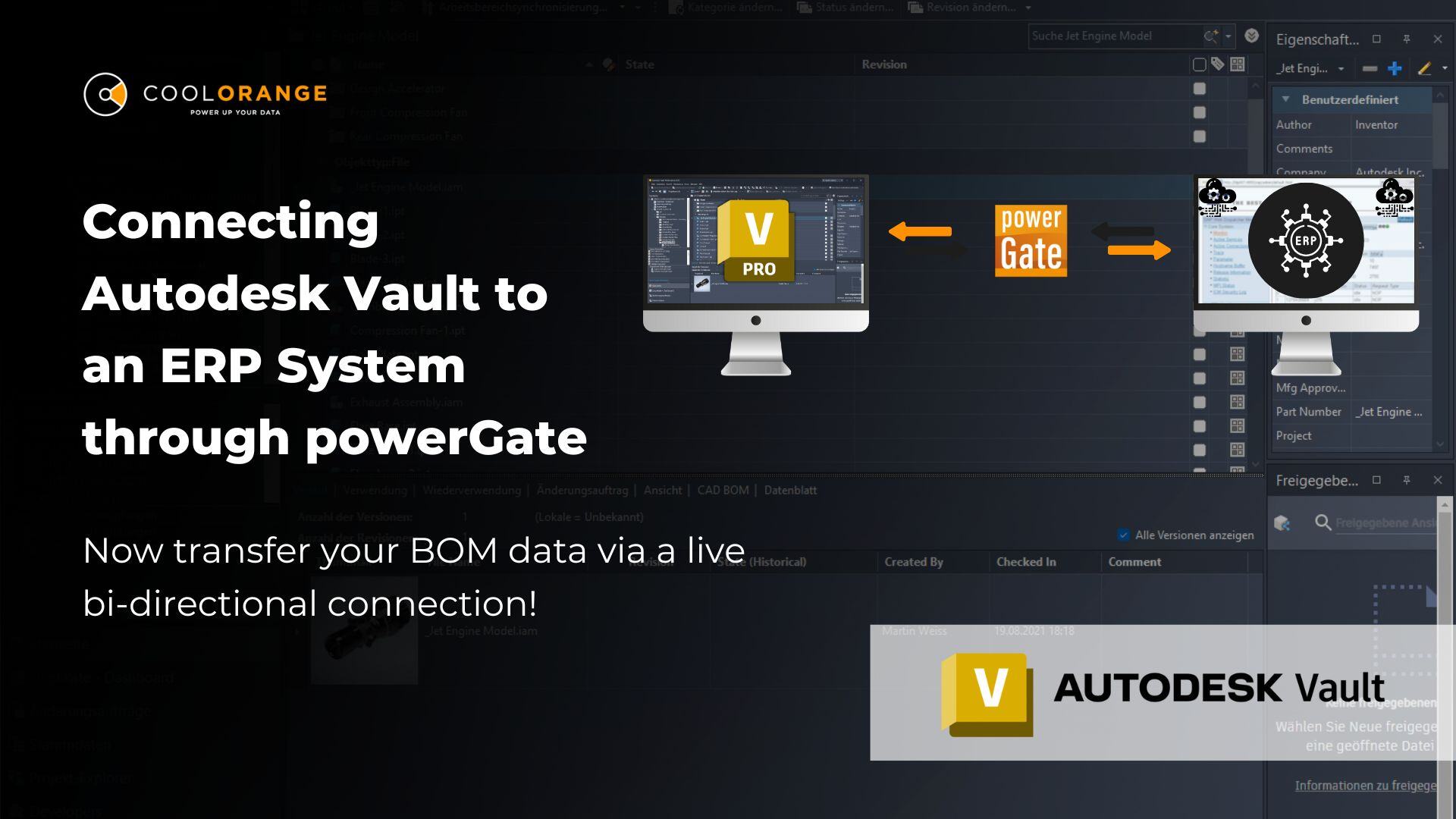Vault Best Practices
The Perfect Symphony: Harmonizing eBOM and mBOM for Manufacturing Success
 In the manufacturing industry, a BOM (Bill of Materials) is a critical document that provides a comprehensive list of all the components, parts, and materials required to produce a specific product. The BOM serves as the foundation for the manufacturing process, guiding the assembly of the product on the shop floor. It contains detailed information about each item, including part numbers, descriptions, quantities, and sometimes additional specifications like dimensions or material type.
In the manufacturing industry, a BOM (Bill of Materials) is a critical document that provides a comprehensive list of all the components, parts, and materials required to produce a specific product. The BOM serves as the foundation for the manufacturing process, guiding the assembly of the product on the shop floor. It contains detailed information about each item, including part numbers, descriptions, quantities, and sometimes additional specifications like dimensions or material type.
Engineering BOM (eBOM) and manufacturing BOM (mBOM) are two different types of bills of materials used in manufacturing processes.
What is Engineering BOM (eBOM)
The Engineering BOM, often referred to as the eBOM, is a product structure that defines the components, sub-assemblies, and raw materials required to design and develop a product. It represents the logical or conceptual structure of the product and is typically created by engineers during the product design phase. The eBOM includes all the necessary information about each component, such as part numbers, quantities, and their relationships to each other.
eBOM focuses on the design and conceptual aspects of a product
The eBOM is primarily used by engineering teams, designers, and product managers to document and communicate the product's specifications and requirements. It helps ensure that the design intent is accurately captured, enables collaboration among different stakeholders, and serves as a reference for future design changes and revisions.
What is Manufacturing BOM (mBOM)
The Manufacturing BOM, also known as the mBOM, is a bill of materials that represents the product structure as it will be manufactured on the shop floor. It includes detailed information about the components, assemblies, and manufacturing processes required to build the product. The mBOM may differ from the eBOM in terms of structure, organization, and additional manufacturing-specific details.
mBOM is concerned with the manufacturing and production processes
The mBOM is primarily used by manufacturing teams, production planners, and shop floor operators to execute the manufacturing process efficiently. It provides detailed instructions on the specific components, assembly procedures, routing information, work centers, and tooling required at each manufacturing stage. The mBOM also includes information related to sourcing, supplier details, and manufacturing-specific part numbers.
Both the eBOM and mBOM are interconnected and serve different purposes throughout the manufacturing lifecycle.
So...who owns what!
In general, the ownership and responsibility for managing the Engineering BOM (eBOM) and Manufacturing BOM (mBOM) can vary depending on the organization's structure and processes. However, here's a typical breakdown of ownership:
Engineering BOM (eBOM) ownership: The eBOM is typically owned and managed by the engineering department or the product development team. They are responsible for creating and maintaining the eBOM throughout the design and development stages of a product. The engineers, designers, and product managers who work on the product design collaborate to define the structure and components of the eBOM.
The ownership of eBOM makes sense because:
-
Engineering teams have the expertise and knowledge to define the product structure, select components, and specify their relationships based on design requirements.
-
They understand the design intent and ensure that the eBOM accurately reflects the product specifications.
-
Engineering teams often work closely with suppliers and vendors to select suitable components, and the eBOM serves as a reference for those interactions.
-
Any design changes or revisions can be tracked and managed within the eBOM, ensuring that the product documentation is up to date.
Manufacturing BOM (mBOM) ownership: The ownership of the mBOM typically rests with the manufacturing or production engineering teams. These teams are responsible for translating the eBOM into a format that is suitable for manufacturing and assembly processes on the shop floor. They convert the design-centric eBOM into a production-centric mBOM.
The ownership of mBOM is justified because:
-
Manufacturing teams have expertise in converting the design intent into practical manufacturing instructions.
-
They define the specific components, assembly procedures, routing information, work centers, and tooling required for each manufacturing stage.
-
Manufacturing engineers optimize the mBOM for efficient production, considering factors such as cost, lead time, manufacturability, and quality.
-
The mBOM incorporates manufacturing-specific details, such as sourcing, supplier information, and manufacturing-specific part numbers.
-
Shop floor operators and production planners rely on the mBOM to execute the manufacturing process accurately and efficiently.
It's important to note that collaboration and communication between the engineering and manufacturing departments are crucial. Both teams need to work together to ensure that the eBOM and mBOM are aligned and reflect the necessary information for successful product development and manufacturing.

The collaboration between Engineering BOM (eBOM) and Manufacturing BOM (mBOM) is important and crucial for several key reasons:
-
Ensuring Design Intent Alignment: Collaboration between engineering and manufacturing teams ensures that the design intent captured in the eBOM is accurately translated into the mBOM. It helps bridge the gap between product design and actual production, ensuring that the manufactured product matches the original design specifications.
-
Design for Manufacturability: Manufacturing teams possess valuable expertise in production processes, assembly techniques, and materials. By collaborating with engineering during the design phase, they can provide feedback on design choices that impact manufacturability. This early input helps avoid costly redesigns or production challenges.
-
Material and Resource Planning: Collaboration between eBOM and mBOM ensures that the right components and materials are available when needed for production. This helps prevent delays caused by material shortages or incorrect parts, leading to smoother production planning and scheduling.
-
Change Management: Throughout the product lifecycle, changes to the design or production process may occur. Collaboration between eBOM and mBOM stakeholders ensures that any changes are effectively communicated, documented, and implemented in both BOMs. This coordination helps avoid discrepancies and confusion during production.
-
Quality and Compliance: The collaboration between eBOM and mBOM teams ensures that the final product meets quality standards and regulatory requirements. Manufacturing teams can provide insights into materials and manufacturing processes that comply with industry standards, resulting in a higher-quality end product.
In summary, the collaboration between eBOM and mBOM is vital to ensure that the design intent is effectively translated into the manufacturing process, resulting in efficient production, high-quality products, reduced costs, and continuous improvement. It establishes a seamless connection between design and production teams, leading to a smoother and more successful product development and manufacturing lifecycle.
At coolOrange, our cutting-edge solutions empower seamless collaboration between eBOM (from Vault) and mBOM (to ERP) transfers, revolutionizing the process through automation and ensuring unparalleled accuracy.






